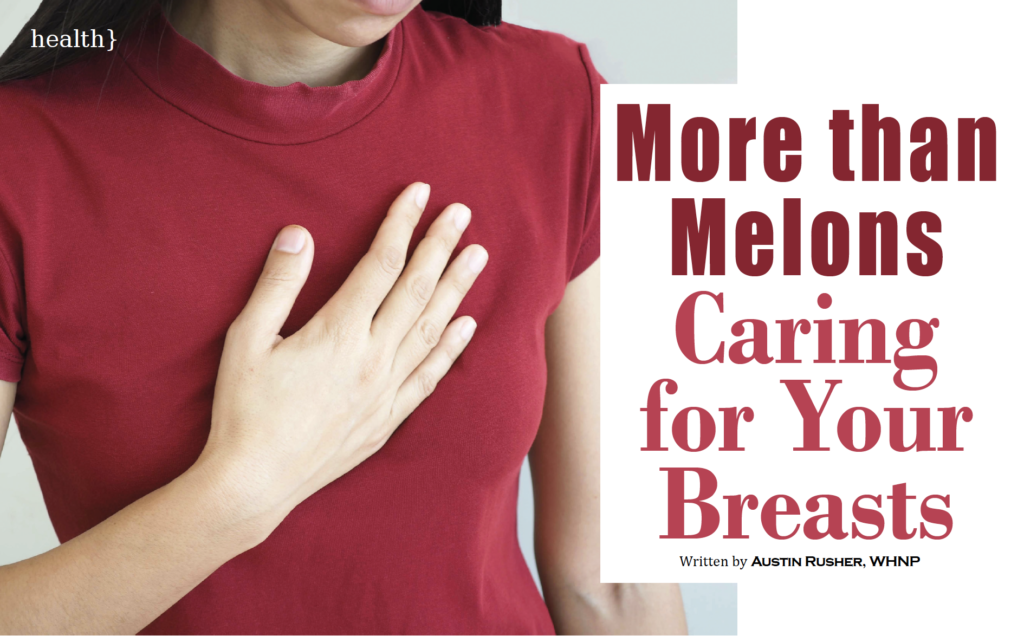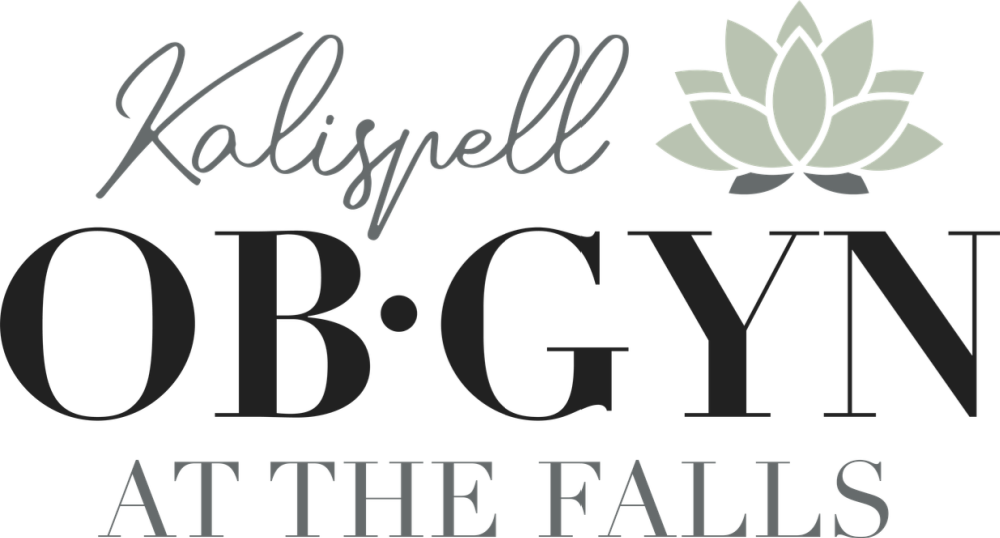More Than Melons, Caring For Your Breasts
Written by Austin Rusher, WHNP | Kalispell OB/GYN

The term euphemism, by choppy definition, is the substitution of a seemingly mild, or innocent, term in replacement of a term or expression deemed to be too blunt or harsh (thank you google) for polite conversation. Understandably, many a euphemism journeys into the realms of healthcare clinics. Three-body parts, in particular, are often shrouded in this mysterious practice. I hear a lot about the back alley, cookies, and melons. I will leave it to your imagination to work those out. Whatever you call them, each anatomical area requires its own proper maintenance and care. Today, we will be focusing on the melons, or in anatomically correct terms, breasts.
For the purpose of this article, we will be focusing on breast monitoring and evaluation, with a discussion of a few common breast-related concerns that lead women to seek care. The minimum general consensus in the medical community is having patients practice something called breast self-awareness.
Breast tissue is more complex than is often realized by society, or more specifically, the owners of breast tissue. Rather than having women stress about every aspect of their breasts, I want them to have a general awareness of their own anatomy so that they can recognize if something feels new, different, or concerned, such as a three-dimensional lump. With any questions, concerns, or during an annual, a clinical breast exam should be performed.
What is a “clinical breast exam” you might ask? Simply a breast exam performed by a trained clinician. There are benign causes of breast masses and tissue changes. In such situations, where these masses have been evaluated and determined to be benign, it will be important for women to recognize their own benign lumps and bumps so that they will recognize if something changes, is new, or different. Therefore, requiring further assessment.
Commonly, when we think about breast health and monitoring, we think about structural causes of concern, such as a lump. However, I advise women to also be on the lookout for skin changes. Concerning skin changes range from dimpling of the skin, similar to the surface of an orange peel, to a red inflamed area without the presence of flu-like symptoms.
Another aspect of breast health, that often gets lost behind the lump conversation, is the cherry on top (apologies to those tired of euphemisms) or the nipple. Nipples need attention too, and if they scale, bleed, or leak (in the absence of breastfeeding or even mild manual expression, aka don’t squeeze the cherries), they need further evaluation by a trained provider. The initial workup of breast-related concerns is very specific to the chief complaint.
Structural concerns often require imaging. Breast pain evaluation often starts with creating a symptom diary to include the timing of symptoms with associated, aggravating, and relieving factors. Concerns related to skin changes range from trialing appropriate medications to assess for improvement, lab-work, to referrals to breast specialists. Finally, nipple discharge evaluation begins with a thorough medical history, medication review, lab-work, and appropriate imaging if indicated.
Next, let’s discuss imaging. Hopefully, because all of our readers are super compliant with their recommended breast cancer screening guidelines, those aged forty years old and older, are familiar with mammography. Mammography is an imaging technique that is typically ordered for screening or diagnostic purposes. The American Cancer Society (ACS) and The American College of Obstetricians and Gynecologists (ACOG), recommend that screening mammography for breast cancer begin at the age of 40 years old for those women of average risk. Our risk for breast cancer can be increased, for example, based on our personal or family history. If we have a personal or family history of certain cancers, not only breast cancer, our risk is increased. In such scenarios, individualized screening guidelines should be enacted.
Diagnostic mammography is ordered outside of screening guidelines. If a patient presents with a concerning mass, oftentimes diagnostic mammography is used to differentiate the type of mass and whether or not the mass is suspicious and requires further follow-up. However, depending on the age of the patient, relevant history, and presentation of symptoms another form of imaging is often incorporated into care. Ultrasound can be employed to differentiate a solid mass from a cystic mass or fluid-filled mass.
In general, a solid mass is usually more concerning. Oftentimes, the two screening modalities can be used together or ordered after the other “if indicated.”
For example, if a mass is found on mammography, an ultrasound can be ordered to assess the mass further afterward. Of note, no imaging is perfect and a thorough history and symptom analysis should always be obtained and help guide care.
Next, let’s discuss a common breast-related concern for which women present to the clinic: mastalgia. Mastalgia is simply the medical term for breast pain and causes a great deal of worry and concern for women that experience it.
Fortunately, breast pain rarely signals a true breast cancer-related problem. Read that again, because I hope that statement can alleviate some anxiety common in women that have experienced, or are experiencing, mastalgia.
Remember that symptom diary we discussed earlier?
The evaluation of breast pain includes a thorough history including timing related, or unrelated, to a women’s menstrual cycle. We know that breast tissue is complex and is also very hormonally sensitive. An easy example scenario demonstrating this relationship is breast tenderness during early pregnancy. When pregnancy is not of concern or ruled out, we look into other causes of hormonal shifts such as an individual’s personal cycle, birth control method, and hormone replacement therapy.
Prior to becoming a Women’s Health Nurse Practitioner, and as a woman myself, I learned about an association between caffeine and breast pain. Caffeine, although not definitively linked to mastalgia by studies, has been associated with breast pain. Especially with a new or sudden increase of intake. Antidotally, my caffeine intake increased substantially during school and I presented to the clinic with my concerns. Luckily, after cutting my coffee intake to a more normal amount, my symptoms resolved. In some women, trialing a complete cessation of any caffeine may be required (that means chocolate too girls, oh-the horror)!
Overall, I believe some of the best advise related to breast health is having a general self-awareness of our own breasts, our personal and family medical history if available, and being knowledgeable about screening guidelines and diagnostic options. We will close today with one of my favorite jokes. I am sure you can guess the answer:
What kind of bees make milk?
If you guessed another breast euphemism you are correct (Boo-bees)!On a more serious note, of course, with any breast related questions or concerns, please visit your provider for an appropriate work-up!
Austin Rusher, WHNP joined Kalispell OB/GYN in December of 2020, returning to Montana to be closer to family. She received her nursing degree from Montana State University in 2012 and her degree as a Women’s Health Nurse Practitioner from Frontier School of Midwifery and Family Nursing in Hyden, Kentucky in 2020.
This article originally appears in 406 Woman Magazine
